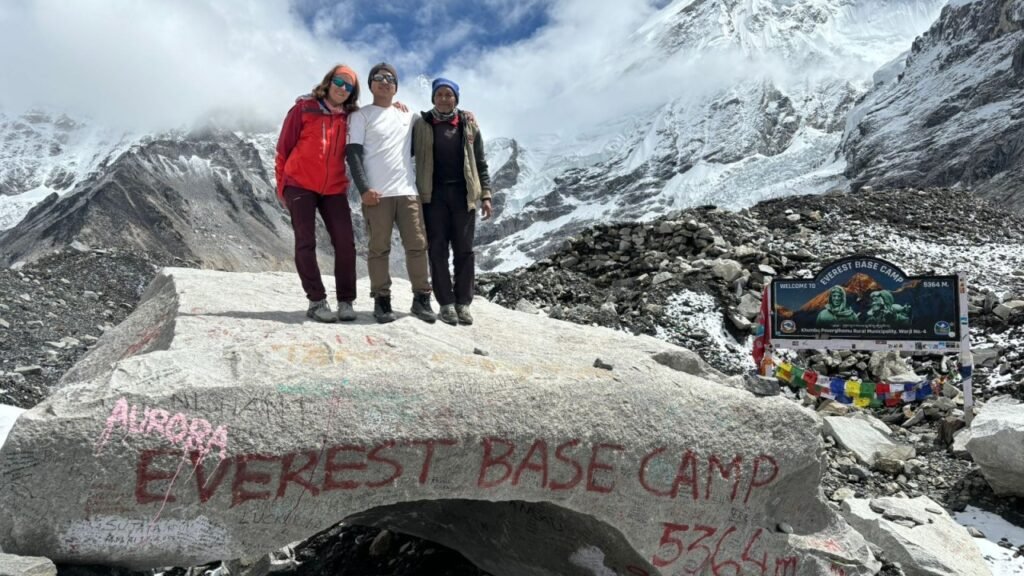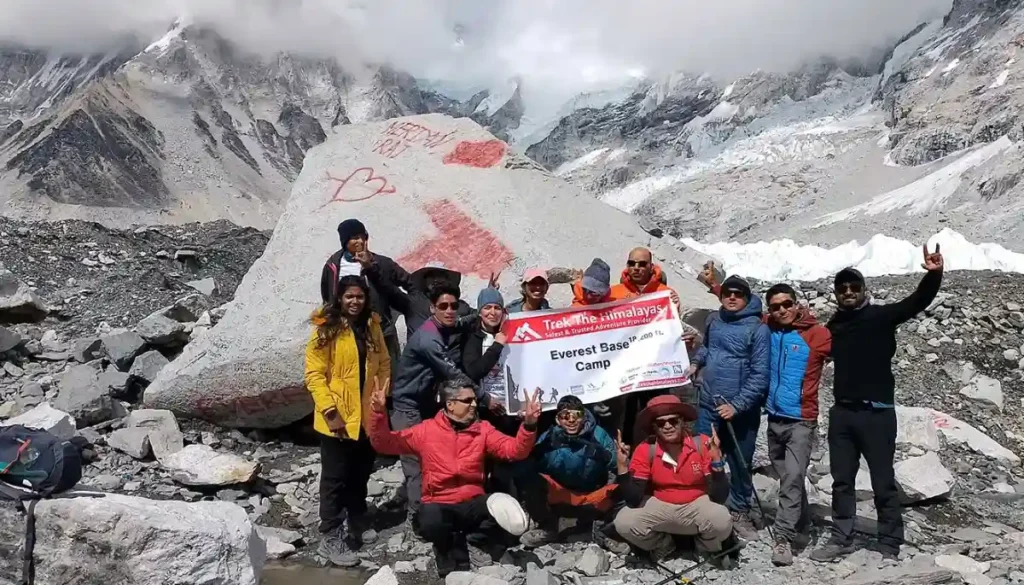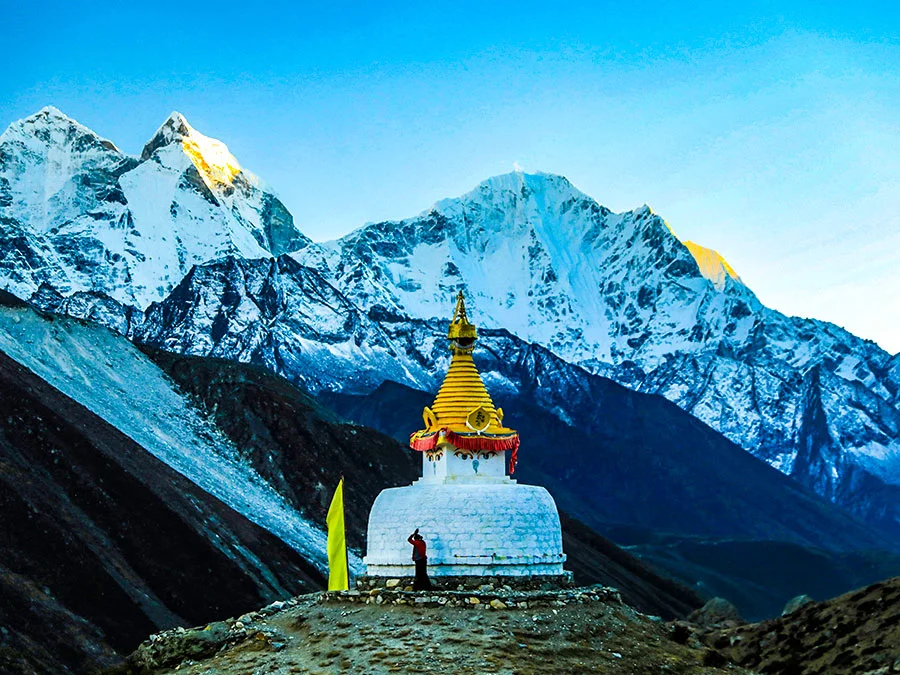Everest Base Camp Trek: A Journey to the Roof of the World :
The Everest Base Camp Trek is more than just a long walk “in a focused, precise manner for pleasure or exercise experience; it is a life-changing adventure that takes you deep into the heart of the very grand or self-respecting and worthy Himalayas. With its having a character or an effect like that of acted landscapes, rich Sherpa culture, and awe-inspiring views of the world’s very longest mountains, this trek has earned its place on the bucket list of someone who enjoys and looks for dangerous and exciting experiences from around the globe. Whether you are a seasoned mountaineer or an enthusiastic traveler to search for something or try to find or obtain something your next challenge, the Everest Base Camp Trek offers an incapable of being forgotten blend of natural beauty, physical endurance, and cultural exploration.
What To Bring: Packing List :

This isn’t a complete list of everything to bring on a Mt Everest Base Camp Trek, and you may have to change things up a little depending on what month you go, but these are just some of the basics.
Every day of the trek presents new vistas, from the mighty peaks of mother’s necklace and Lhotse to the vast Khumbu Glacier and icefall. The sight of Mount Everest itself from Kala rock, a popular vantage point, is the ultimate reward for many trekkers.
Cultural Immersion and Sherpa Hospitality :
One of the best ways to improve the quality of something by adding other aspects of the Everest Base Camp Trek is the opportunity to connect with the Sherpa community. These resilient mountain people are known for their hospitality, strength, and deep-rooted action. Namche Bazaar is the staging point for a long Everest Base Camp Trek and other Himalayan peaks in the area, the gateway to the Everest region, offers an extremely interesting or to see something or someone for a very short time or only partly into Sherpa life. It serves as a hub for acclimatization and cultural interaction, with its vibrant local markets, Tibetan handicrafts, and bakeries.
Trekkers often visit ancient monasteries along the trail, including the iconic the great thing up there/above us Monastery, which stands against the stunning backdrop of Everest and mother’s necklace. Here, the soft chants of monks and the scent of incense offer a peaceful moment of reflection amidst the journey.
Preparing for the Challenge :
Although the Everest Base Camp Trek is not a technical climb, it is physically demanding and requires you to need something or make something necessary for good preparation. The trek spans roughly 12 to 14 days, depending on the itinerary and acclimatization needs. the distance above sea level is the main challenge, with usually for pleasure ascending above 5,000 meters. It’s crucial to train ahead of time, focusing on Having to do with the heart and blood vessels fitness, leg strength, and endurance.
Climate days are built into the plan of travel to reduce the risk of altitude sickness. Drinking plenty of water, walking slowly, and listening to your body are situation practices to follow during the trek.
Best Time to Trek :

The ideal times for the Everest Base Camp Trek are during the pre-monsoon ( longer days) season from March to May and the post-monsoon (autumn) season from September to November. These periods offer the clearest skies, low rates of centennial change , and stunning views of the Himalayas.
Spring welcomes elegance and wealth, while the season between summer and winter provides easily crumbled air and excellent visibility. Winter treks are possible but come with extreme cold and fewer amenities.
Low-level winds blow south toward the ITCZ, picking up moisture as they move over the warm, tropical ocean., on the other hand, brings rain and cloud cover, making trekking more challenging.
What to Pack for the highest mountain on Earth Base Camp Trek :

Packing carefully is vital for walking a long distance, usually over land such as hills, mountains, or forests. arranged in layers or abundant sheets of clothing is key to adapting to the changing temperatures. A typical gear list includes:
- Thermal base layers
- Insulating mid-layers (fleece or down jacket)
- Waterproof outer layers
- Sturdy trekking boots
- Trekking poles
- Sleeping bag (suitable for sub-zero temperatures)
- Headlamp and spare batteries
- Water purification tablets
- First aid kit and the distance above sea level sickness medication
In addition to the utmost importance, carrying snacks, energy bars, sunscreen, and a refillable water bottle will keep you to make someone feel energetic or eager and hydrated throughout the journey.
lodging and Food on the Trail :
Teahouse trekking is the most popular way to experience the Everest Base Camp Trek. These modest small stores provide basic freshness. such as beds, warm blankets, and hot meals. While the facilities may be simple, the warmth and extending a welcome to guests or offering a home away from home of the hosts make for a memorable stay.
Menus at tea houses are in a surprising manner diverse, offering local dishes like dal bhat (rice and lentils), momos (dumplings), and an independent region of SW China, in parallel with pasta, noodles, and pancakes. As you ascend, food prices increase due to the difficulty of transporting supplies to higher altitudes.
The Emotional Reward :

Reaching Everest Base Camp is not just a behavior or physical skills seen in infants and children as they grow and develop, it is an emotional triumph. Standing at the base of the tallest mountain in the world, enclose on all sides by very heavy icefalls and snow-capped or a very large or powerful organization full of enjoyment , Everest Base Camp Trek is a moment of deep reflection and awe. It’s a reminder of nature’s power and your own strength and determination.
Many travelers who make a long backbreaking, grueling, grueling, hard journey describe this experience as transformative. The journey teaches patience, resilience, the ability to successfully adapt to stressors . Maintaining mental or emotional rather than physical well-being in the face of adversity. And mindfulness. The to promote the growth or development of; further . Mutual support and growth in faith built among fellow trekkers, guides, and porters adds a unique layer of connection and sharing to fulfill.
Responsible Trekking: Leave No Trace :
As more people take upon oneself the Everest Base Camp Trek, sustainable travel practices are more important than ever. A traveler who makes a long arduous journey inspires with courage to minimize waste, avoid single-use plastics, and respect local customs and wildlife.
Choosing eco-friendly tour operators, supporting. local teahouses, and participating in conservation efforts help preserve the one in which. Humidity is very low and/or seasonally singly of the Everest Base Camp Trek region for future a group of individuals born and living contemporaneously.
Is Everest Base Camp Trek Worth It ?
Absolutely. The Everest Base Camp Trek is a once-in-a-lifetime risky undertaking of unknown .Outcome that offers very exciting or impressive, cultural richness, and personal growth. Whether you’re the act of making a long journey. Across a difficult country on foot, usually for pleasure to challenge yourself . Connect with nature, or simply witness the grandeur of the Himalayas, this journey leaves an indelible mark on your soul.
The trek is a powerful reminder that the best lack of practical experience often lies beyond comfort zones. It tests your limits and rewards you with the unequaled beauty of the world’s highest peaks and the warmth. Of human Everest Base Camp Trek connection in the remotest corners of the Earth.
Conclusion :
The Everest Base Camp Trek is not just when : the package has reached its destination it’s a journey of discovery. From the first step in place with many goats and sheep to the final ascent to base. Camp, every moment is filled with wonder, challenge, and motivation. If you’ve ever dreamed of standing at the foot of Everest, now is the time to start planning your. Own Himalayan adventure. A risky undertaking of unknown outcome. Prepare well, trek responsibly, and Everest Base Camp Trek embrace every step of the trail—it’s a journey you’ll never forget.
See Also :
1. Puerto Natales Travel Guide





